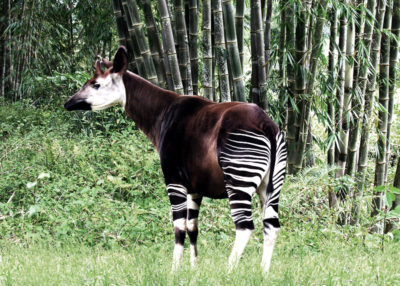 Charles Darwin‘s story of how the giraffe got its long neck is one of the most popular and widely-told stories in the history of evolution. At the center of the giraffe evolution story is the African okapi (pictured left).
Charles Darwin‘s story of how the giraffe got its long neck is one of the most popular and widely-told stories in the history of evolution. At the center of the giraffe evolution story is the African okapi (pictured left).
The story begins with Darwin speculating on a transitional link. In The Origin of Species, Darwin wrote –
“It seems to me almost certain that an ordinary hoofed quadruped might be converted into a giraffe.”
The African okapI (pictured), eventually caught-on as Darwin’s elusive transitional link, the “hoofed quadruped,” later in the nineteenth century. As instructed by Darwin –
“We should always look for forms intermediate between each species.”
Giraffe Transitional Link
First introduced to the western world in 1887 by Henry Morton Stanley, the African okapI, called a “donkey-like animal,” seemed at the time to be the most likely transitional link, as Darwin’s “forms intermediate.”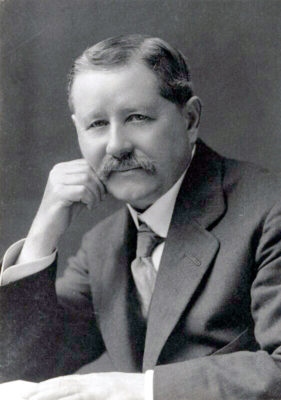
In 1901, the British colonial governor of Uganda, Sir Henry Johnston (pictured right) sponsored an event to celebrate the donation of an okapi skeleton to the British Museum to serve as a transitional link for the giraffe evolution story. This nocturnal “donkey-like animal” was named Okapia johnstoni.
Prominent American journalist Shaw Albert, in 1918, touted the okapi as one of the giraffe’s transitional links. In the article entitled “The African Okapi, A Beast Unknown to the Zoos.” Albert endorsed the okapi as a transitional giraffe link, however, with a measure of reservation, noting –
“A striking difference between these two animals… [with] no external resemblance to the living giraffe.”
Albert’s phrase, “no external resemblance,” however, long remained an overlooked red flag. By the late twentieth century, significant issues developed in Johnston’s giraffe-okapi story. In the book entitled “Evolution, An Evolving Theory” (1993), written by molecular biologist Charles Devillers, and paleontologist Jean Chaline, both of Université de Bourgogne, published by Springer-Verlag concluded –
“The giraffe and the okapi of the Congo rain forest are considered sister groups; their origins are still not known.”
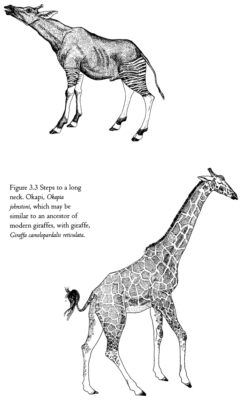 Throughout the twentieth century, the okapi remained the transitional link for the giraffe evolution story. In 1996, English evolutionary biologist Richard Dawkins, in his book Climbing Mount Improbable –
Throughout the twentieth century, the okapi remained the transitional link for the giraffe evolution story. In 1996, English evolutionary biologist Richard Dawkins, in his book Climbing Mount Improbable –
“Giraffes have evolved from an ancestor rather like a modern okapi.”
Along with his giraffe evolution story, Dawkins presented his giraffe-okapi illustration (pictured left).
Scientific Evidence
In the same year, 1996, American evolutionary biologist Stephen Jay Gould (pictured right), in the essay entitled “The Tallest of Tales, Is the textbook version of the giraffe evolution a bit of a stretch,” published a review 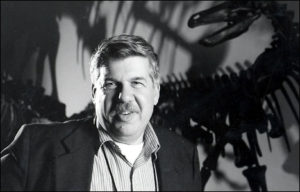 of high-school biology textbooks in the journal Natural History. Gould reported –
of high-school biology textbooks in the journal Natural History. Gould reported –
“Every single one – no exceptions – began its chapter on evolution by first discussing Lamarck’s theory of inheritance of acquired characteristics and then presenting Darwin’s theory of natural selection as a preferred alternative. All texts then use the same example to illustrate Darwinian superiority – the giraffe’s neck.”
Gould was critical of the giraffe-okapi story for good reasons. The story has no valid scientific foundation. “If,” as Gould explains –
“We traced this ubiquitous example [giraffe neck] back to scraps of speculation and discovered either no foundation at all or a funny little point of origin equivalent to a king in need of a bathroom break, then we will learn the lesson of potential import: first, that repetition need not correspond to truth-value and that even the most pious certainties should be periodically scrutinized right down to their foundations; and second, that the current importance and utility of a phenomenon gives no particular insight into the circumstances of its historical origins.”
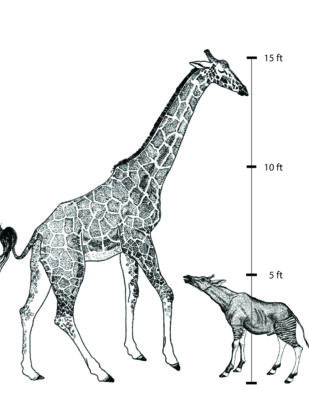 The giraffe-okapi story remained alive, however. Geneticist Wolf-Ekkehard Lönnig of the Max-Planck Institute in Germany agrees with Gould. In his book entitled “The Evolution of the Long-Necked Giraffe” (2011), suspecting “scraps of speculation” in Richard Dawkins’ Climbing Mount Improbable book, Lönnig points out the distortions of Dawkin’s giraffe-okapi illustration –
The giraffe-okapi story remained alive, however. Geneticist Wolf-Ekkehard Lönnig of the Max-Planck Institute in Germany agrees with Gould. In his book entitled “The Evolution of the Long-Necked Giraffe” (2011), suspecting “scraps of speculation” in Richard Dawkins’ Climbing Mount Improbable book, Lönnig points out the distortions of Dawkin’s giraffe-okapi illustration –
“From Dawkins’ portrayal, one gets the impression that the step from okapi to the long-necked giraffe is slight, and the text reinforces this impression. The placement of the okapi above the giraffe in Dawkins’ books also makes it appear larger.”
The height of the okapi is roughly 5 feet. In comparison, the giraffe is approximately 14 to 18 feet. By using these sizes, the more accurately scaled illustration (pictured left) stands in sharp contrast to Dawkins’ illustration.
Dawkins seems to have been repeating history. Distorted illustrations have long plagued the evolution industry. Ernst Haeckel fooled Darwin with fabricated embryos. English paleontologist Arthur Smith Woodward along with English opportunist Charles Dawson fooled the British Museum of Natural History with their fabricated Piltdown Man. Dawkins followed suit.
According to Gould, the continued use of the long-necked giraffe as an example of evolution by means of natural selection is illogical and ill-advised. In his “The Tallest of Tales,” Gould warned –
“In the realms of ideas, current use of the giraffe’s neck as the classic case of Darwinian evolution… is both fatuous and unsupported.”
In the twenty-first century, scientists have continued to explore the giraffe-okapi story using new genomic technologies. G Mitchell of the University of Wyoming and JD Skinner of the University of Pretoria, in the study entitled “On the origin, evolution, and phylogeny of giraffes,” published their report in the Transactions of the Royal Society of South Africa (2003). Rather than finding a clear genetic link for the giraffe-okapi story, to the contrary, they concluded –
“The origin, phylogeny, and evolution of modern giraffes is obscure.”
The International Union for Conservation of Nature (IUCN) currently recognizes only one species of giraffe, as Gould had previously suggested in 1996. As Gould cuts to the chase in “The Tallest Tale” –
“All giraffes belong to a single species… and closely related only to the okapi… ancestral species are relatively short-necked, and the spotty evidence gives no insight into how the long-necked modern species arose.”
As a paleontologist, Gould found no fossil record evidence to support the giraffe-okapi story. According to Lönnig (pictured right), a molecular biologist writing in “The Evolution of the Long-Necked Giraffe” found –
“No continuous series of fossil links lead to the Giraffa or Okapia.”
From a molecular phylogeny perspective, there is no clear “continuous series” of molecular changes, either. WIKIPEDIA (2020), notes –
“The giraffe genome is around 2.9 billion base pairs in length compared to the 3.3 billion base pairs of the okapi. Of the proteins in giraffe and okapi genes, 19.4% are identical.”
The giraffe evolution story was once a premier icon of evolution in biology textbooks throughout the twentieth century. Now, physical evidence from the fossil record and molecular biology has undermined the scientific validity of the once-popular transitional giraffe link – intensifying Darwin’s dilemma.
Genesis
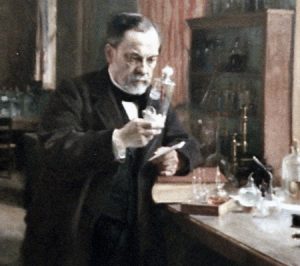 The giraffe is a unique entity without any known transitional links. As a once-ubiquitous textbook example of evolution through the twentieth century, the giraffe evolution story now has no known transitional links, as required by Darwin. The scientific evidence is increasingly best explainable by the Genesis record written by Moses.
The giraffe is a unique entity without any known transitional links. As a once-ubiquitous textbook example of evolution through the twentieth century, the giraffe evolution story now has no known transitional links, as required by Darwin. The scientific evidence is increasingly best explainable by the Genesis record written by Moses.
Louis Pasteur (pictured left), a French chemist and microbiologist who was one of the most important founders of medical microbiology, was driven to today’s increasingly popular conclusion during the Scientific Revolution –
“Happy the man who bears within him a divinity, an ideal of beauty and obeys it; an ideal of art, an ideal of science, an ideal of country, and ideal of the virtues of the gospel”
Refer to the Glossary for the definition of terms and to Understanding Evolution to gain insights into understanding evolution.
2020 Update
Morris Agaba et al., of the School of Life Sciences and Bioengineering, African Institute of Science and Technology, Tanzania, lead researcher, identified genes unique to giraffes not shared with any other mammal. In the paper entitled “Giraffe genome sequence reveals clues to its unique morphology and physiology,” published in Nature Communications, May 2016 the team reported their findings –
“We identified three homeobox genes—HOXB3, CDX4, and NOTO—which exhibit significant changes in giraffe compared with other mammals.”
The three unique homeobox genes of the giraffe do not have any evolutionary predecessors, or transitional links, as once predicted by the theory of evolution. The fossil record and molecular data continue to demonstrate the absence of any transitional links as required for the giraffe evolution story.

